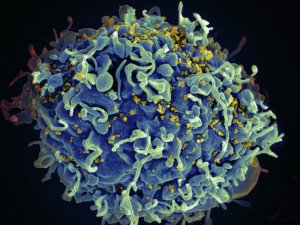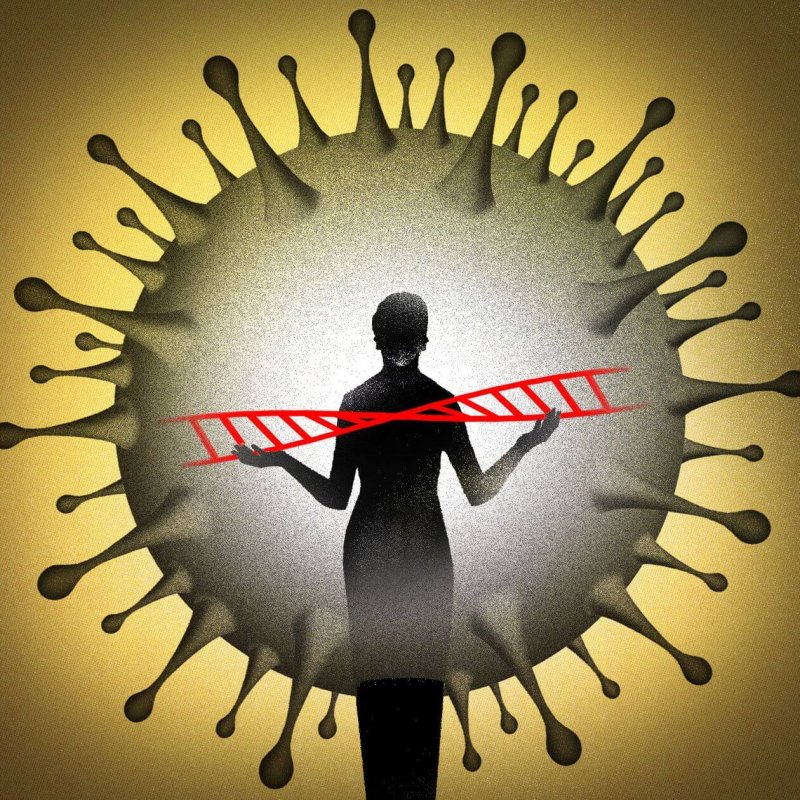“The single biggest threat to man’s continued dominance on the planet is the virus.” Joshua Lederberg, Nobel Prize in Physiology or Medicine, 1958
One of the most terrifying aspects of the COVID-19 pandemic is that we don’t know what makes one person die, another suffer for weeks, another have just a cough and fatigue, and yet another have no symptoms at all. Even the experts are flummoxed.“I’ve been puzzled from the beginning by the sharp dichotomy of who gets sick. At first it was mostly older people with chronic disease, and then a young person with low risk would show up. It can be devastating and rapid in one individual but mild in another,” said Anthony Fauci, MD, director of the National Institute of Allergy and Infectious Disease on a media webinar.
What lies behind susceptibility to COVID-19? Gender? Genetics? Geography? Behavior? Immunity? All of these factors may be at play, and they overlap.

Comedian Bill Maher blames poor immunity on eating too much sugar, and a thriving industry pitches immune-boosters, but much of the strength or weakness of an individual’s immune response arises from specific combinations of inherited gene variants. That’s my take as a geneticist, and Dr. Fauci’s. “Perhaps genetics and the immune response play a role in why one person has a mild response, yet another rapidly deteriorates into viral pneumonia and respiratory failure,” he said.
Learning as we go
During the first weeks of the pandemic, the observation that many victims were either older, had certain chronic medical conditions, or both, fed a sense of denial so widespread that young people flocked to Spring Break beaches as older folks boarded cruise ships in Florida as recently as early March. And then the exceptions began to appear among the young people.
While clinicians on the front lines – everywhere – are saving as many lives as possible, researchers are racing to identify factors that the most vulnerable, and the most mildly affected, share, especially the asymptomatic carriers. And as the numbers continue to climb and more familiar possible risk factors are minimized or dismissed – age, location, lifestyle habits – genetics is emerging as an explanation for why otherwise young, strong, healthy people can die from COVID-19.
Following are possible genetic explanations for why some people become sicker than others. These are hypotheses, the language of science: ideas eventually fleshed out with observations and data. “Proof” is part of mathematics; in science, conclusions can change with new data. The public is getting a crash course in the scientific method.
Twice as many males as females: the role of the X
The most obvious genetic risk factor in susceptibility to COVID-19 is being male. The details of disease demographics change daily, but males are about twice as likely to die if they’re infected as are women: 4.7% versus 2.8%.
At first people blamed the sex disparity on stereotypes, like the riskier habits of many a male compared to females. But the sex difference comes down to chromosomes.

In humans, a gene, SRY, on the Y chromosome determines sex. Males have one X and a puny Y; females have two Xs. Fortunately, nature takes care of this fundamental inequality of the sexes, which I detailed here and in every biology textbook I’ve ever written.
To compensate for the X deficit of the male, one X in every cell of a female is silenced beneath a coating of methyl groups, an epigenetic change. But which X is silenced differs, more or less at random. In a liver cell, the turned off X might be the one that the woman inherited from her father; in a skin cell, the silenced X might be the one inherited from her mother.
The immune system seems to benefit from the female’s patchwork expression of her X-linked genes, with a dual response. Gene variants on one X may recognize viruses, while gene variants on the other X may have a different role, such as killing virally-infected cells.
Women also make more antibodies against several viral pathogens. But some of us pay the price for our robust immune response with the autoimmune disorders that we are more likely to get.
ABO blood type
People with type O blood may be at lower risk, and with type A blood at higher risk, of getting sick from SARS-CoV-2, according to results of a recent population-based study. But the idea of type O blood protecting against viral infections goes back years.
We have three dozen blood types. They’re inherited through genes that encode proteins that dot red blood cell (RBC) surfaces, most serving as docks for sugars that are attached one piece at a time. The RBCs of people with type O blood do not have an extra bit of a sugar that determines the other ABO types: A, B, or AB.
The unadorned RBCs of people with type O blood, like me, are less likely to latch onto norovirus (which explains why I rarely throw up), hepatitis B virus, and HIV.
 An investigation of ABO blood types from the SARS epidemic of 2002 to 2003 provides a possible clue to the differences. People with blood types B and O make antibodies that block the binding of the SARS virus’s spikes to ACE2 receptors on human cells growing in culture. Since the novel coronavirus enters our cells through the same receptors, are people with type O blood less likely to become infected?
An investigation of ABO blood types from the SARS epidemic of 2002 to 2003 provides a possible clue to the differences. People with blood types B and O make antibodies that block the binding of the SARS virus’s spikes to ACE2 receptors on human cells growing in culture. Since the novel coronavirus enters our cells through the same receptors, are people with type O blood less likely to become infected?
That’s what researchers from several institutions in China have found in the new study. They compared the blood types of 2,173 patients with COVID-19 from three hospitals in Wuhan and Shenzhen to the distribution of blood types in the general population in each area.
People with type A blood were at higher risk than people with type 0 blood for both infection and severity of the illness.
In the general population 31% of the people are type A, 24% are type B, 9% are type AB, and 34% are type O. But among infected individuals, type A is up to 38%, type B up to 26%, AB at 10%, and type O way down to 25%.
The researchers conclude that the findings demonstrate “that the ABO blood type is a biomarker for differential susceptibility of COVID-19.” I think that’s a bit strong for a trend, considering the exceptions. But the researchers suggest that their findings, if validated for more people, can be used to prioritize limited PPE resources and implement more vigilant surveillance and aggressive treatment for people with blood type A.
A few good genes
Immunity and genetics are intimately intertwined. Links between mutations – both harmful and helpful – and immunity to infectious diseases are well known.
Mutations in single genes lie behind several types of severe combined immune deficiencies (SCIDs), like “bubble boy disease.” Sets of human leukocyte antigen gene variants (HLA types) have long been associated with increased risk of autoimmune conditions such as celiac disease, type 1 diabetes, and rheumatoid arthritis, and were for many years the basis of tissue typing for transplants.

In HIV/AIDS, two specific mutations in the CCR5 gene remove a chunk of a co-receptor protein to which the virus must bind to enter a human cell. The mutation has inspired treatment strategies, including drugs, stem cell transplants, and using CRISPR to recreate the CCR5 deletion mutation by editing out part of the gene.
Might variants of the gene that encodes ACE2, the protein receptor for the novel coronavirus, protect people in the way that a CCR5 mutation blocks entry of HIV? The search is on.
Another clue to possible genetic protection against the novel coronavirus may come from the SARS experience from years ago and parasitic worm diseases in Africa. (This hypothesis I came up with on my own so I’m prepared to be shouted down.)
In a human body, the SARS virus disrupts the balance of helper T cells, boosting the number of cells that fight parasitic worms (the Th2 response) while depleting the cells that protect against bacteria and viruses (the Th1 response). The resulting “Th2 immune bias,” in SARS as well as in COVID-19, unleashes the inflammatory “cytokine storm” that can progress to respiratory failure, shock, and organ failure.
In subSarahan Africa alone, a billion people have intestinal infections of parasitic worms, the most common of which is schistosomiasis. It’s also called “snail fever” because the worms are released into fresh water from snails and burrow into people’s feet when they wade in the water.
The worms mate inside our blood vessels, releasing eggs that leave in urine and feces into the water supply. Remaining eggs can inflame the intestines and bladder. The infection begins with a rash or itch, and causes fever, cough, and muscle aches in a month or two. A drug treatment is highly effective.
Genetics determines susceptibility, or resistance to, schistosomiasis. And that’s what got me thinking about COVID-19.

People who resist the flatworm infection have variants of eight genes that ignite a powerful Th2 immune response that pours out a brew of specific interferons and interleukins. Could the “Th2 immune bias” of the novel coronavirus SARS-CoV-2 not be as devastating to people who already have the bias, to resist schistosomiasis? If so, then places in Africa where many people are immune to schistosomiasis might have fewer cases of COVID-19.
So far parts of Africa have reported low incidence of the new disease. On April 7, the World Health Organization reported approximately 10,000 cases in all of Africa. That’s similar to the number of deaths in New York City, although Africa could be on track for the exponential growth seen elsewhere. But if the lower number in Africa persists, then maybe those eight genes are protecting people. Adding to the evidence is that the 8-gene set varies more between West Africans and Europeans than do other sets of genes.
Like the ABO blood type study, if the 8-gene signature that protects against schistosomiasis protects against COVID-19, then the signature should be overrepresented among those exposed to the virus who do not get very sick, and underrepresented among those who do. However, it’s possible that Africa is just behind the rest of the world in reporting COVID-19 cases. So, a thought experiment for now.
Considering genetics
Before researchers zero in on a highly predictive genetic signature of COVID-19 risk, we can think about how the information would best be used:
- To triage patients with early symptoms, to predict who will become sickest.
- To use resources in an informed way.
- To inspire development of new drugs and investigating repurposing of drugs that have mechanisms of action that suggest that they might destroy SARS-CoV-2.
I hope that discovery of a genetic basis for COVID-19 vulnerability or resistance will not inspire discrimination – unfortunately, genetic information has had a legacy of misuse.
Ricki Lewis is the GLP’s senior contributing writer focusing on gene therapy and gene editing. She has a PhD in genetics and is a genetic counselor, science writer and author of The Forever Fix: Gene Therapy and the Boy Who Saved It, the only popular book about gene therapy. BIO. Follow her at her website or Twitter @rickilewis































